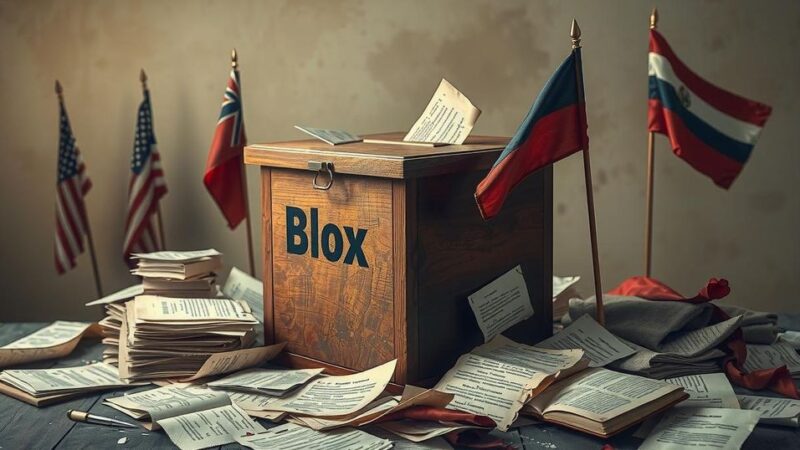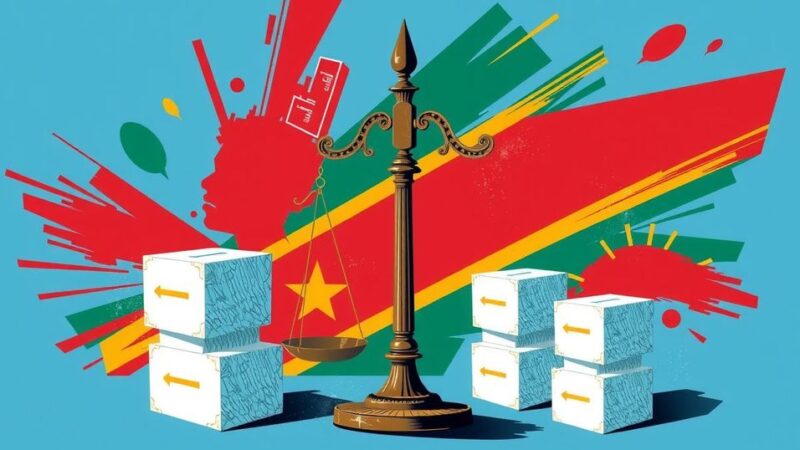Peru’s security crisis intensifies as emergency measures fail to reduce violence, raising concerns over corruption and ineffective governance. President Boluarte’s support for Interior Minister Santiváñez, amidst public outcry and high disapproval ratings, signals a political stalemate. The situation mirrors broader regional crime trends, casting doubt on the government’s capacity to restore order and safety.
Peru is facing an escalating security crisis, with emergency measures implemented by President Dina Boluarte failing to alleviate the violence. The government’s actions have received skepticism as crime rates soar, and allegations of corruption at high levels impede effective governance. Despite declaring a state of emergency in Lima and Callao to manage this situation, criminal activities continue unabated, raising serious concerns about the administration’s strategy.
The emergency state was prompted by the murder of cumbia singer Paul Flores, marking the second such measure in six months. Critics describe this as a reactionary approach rather than a comprehensive plan to combat organized crime. Interior Minister Juan José Santiváñez is central to the controversy and faces multiple censure motions in Congress, as his approval ratings have plummeted amidst accusations of incompetence.
Public discontent is palpable, with Santiváñez’s disapproval rating at 79%. Despite this, Boluarte continues to support him, a stance questioned by many given the legal challenges both politicians share. The emergency declaration followed violent incidents, including threats that went unaddressed by authorities, raising doubts about the effectiveness of government oversight.
Moreover, Boluarte’s remarks regarding potential death penalty considerations for crime demonstrate a lack of coherent strategy, drawing criticism from human rights advocates. The Human Rights Ombudsman has criticized the government’s emergency measures as ineffective, emphasizing the importance of evidence-based policy rather than political maneuvers.
Statistical data underscore a grim situation, with over 2,000 homicides reported in 2024, and expansions of violence from transnational criminal organizations. Allegations of corruption surrounding Santiváñez further complicate matters, as accusations of bribery and misconduct have emerged, which the President has largely dismissed.
Bloomberg has described Boluarte as “one of the world’s most unpopular leaders,” especially following her absence from important global forums amidst the crisis. The current administration’s reaction to the security situation is criticized not only for ineffectiveness but for authoritarian tendencies, as the emergency powers risk human rights abuses. The context of regional crime expansions in areas like Ecuador and Colombia highlights the systemic issues Peru faces in addressing its internal security challenges.
As the government prepares for a critical parliamentary discussion regarding Santiváñez’s future, the larger question persists: Can Peru escape the entrenched cycle of violence and governance failures? With Boluarte’s administration struggling to provide solutions, the country’s future remains uncertain.
In summary, Peru is navigating a severe security crisis exacerbated by ineffective emergency measures and allegations of corruption within its government. The state of emergency declared by President Boluarte has failed to quell violence, raising doubts about her leadership. The enduring issues of organized crime and public discontent, coupled with the challenges facing Interior Minister Santiváñez, contribute to a bleak outlook for the nation amidst calls for comprehensive reform.
Original Source: www.intellinews.com






